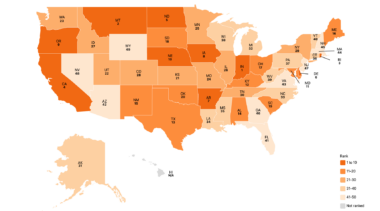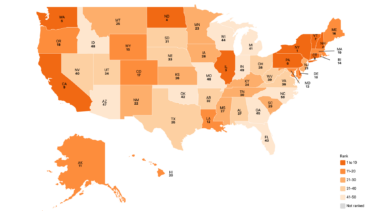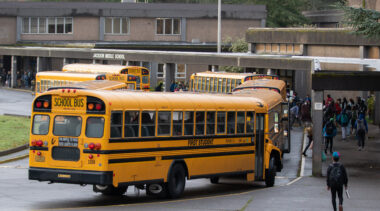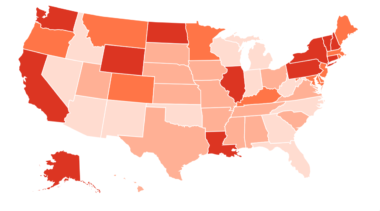Christian Barnard is assistant director of education reform at Reason Foundation.
Barnard's work includes research and analysis of state education and school district finance systems, with the goal of making them more equitable and innovative.
Barnard's writing has been featured in outlets including USA Today, Los Angeles Daily News, Washington Times, and The Hill, among others.
Barnard previously worked with the Foundation for Government Accountability, where he conducted research on labor policy and criminal justice. He also worked for the Pioneer Institute.
He holds a bachelor of arts degree in philosophy and economics from Messiah College.
-
The cost of state hold harmless policies in K-12 education
With widespread public school enrollment losses in the wake of the COVID-19 pandemic, the financial costs of some hold harmless policies have increased exponentially.
-
Public education at a crossroads: A comprehensive look at K-12 resources and outcomes
Examining key education spending, enrollment, staffing, and student performance data over the past two decades in all 50 states.
-
Public education at a crossroads: K-12 education revenue and expenditure trends 2002-2020
Nationwide, inflation-adjusted public school revenues grew from $12,852 per student in 2002 to $16,065 per student in 2020.
-
Public education at a crossroads: Enrollment, staffing, and teacher salary trends 2002-2020
Nationwide, inflation-adjusted average teacher salaries fell by 0.6% between 2002 and 2020 with a total of 26 states seeing declines.
-
Public education at a crossroads: Math and reading outcomes (low-income students only)
Between 2003 and 2019, the average U.S. 4th grade NAEP math score for free and reduced-price lunch eligible students increased by seven points.
-
Public education at a crossroads: Math and reading outcomes (all students)
Between 2003 and 2019, the average U.S. 8th-grade NAEP reading score was flat. The average 8th-grade NAEP math score increased by four points.
-
Public education at a crossroads: Education spending data for all 50 states 2002-2020
Examining every state's K-12 public education spending, staffing and enrollment levels, teacher salaries and more.
-
Updated Arizona K-12 education finance model with latest school finance and transportation data
The model allows users to test changes to Arizona’s funding formula, see how changes to local property taxes impact funding, and see how potential changes affect the funding of individual school districts and charter schools.
-
Clearing up definitions of backpack funding
Without strong funding portability mechanisms, school districts have weak financial incentives to welcome transfer students.
-
Public education funding without boundaries: How to get K-12 dollars to follow open enrollment students
How to ensure state and local education funds flow seamlessly across district boundaries.
-
K-12 funding in Tennessee: A student-centered approach
By adopting a student-centered funding model, Tennessee would replace the state's outdated education finance system that lacks transparency and local control.
-
K-12 Education Spending Spotlight 2021: An in-depth look at school finance data and trends
Reason Foundation’s 2019 K-12 Education Spending Spotlight provides critical insight into key school finance trends across the country by providing policymakers, researchers, and other stakeholders easy access to K-12 education spending data in every state.
-
A Vision For Better School Funding in Arkansas
Arkansas should streamline education dollars into a weighted student formula and ensure that school operational decisions are left in the hands of local leaders.
-
Modernizing School Finance in Idaho
This policy brief provides a brief overview of Idaho’s school finance system, highlights its primary shortcomings, and makes several recommendations for reform.
-
Inform: Give Stakeholders The Information They Need to Make Sound Education Funding Decisions
Financial transparency can help leaders get the most out of education dollars while shining light on their spending decisions.
-
Empower: How to Put Families and School Leaders in the Driver’s Seat
Policymakers should let those who are closest to kids decide how education dollars are spent, and families should be given options outside of their residentially-assigned public schools.
-
Equalize: Education Funding Policies That Put All Kids on a Level Playing Field
Education dollars should be equalized to ensure that funding is based on students, not property wealth or zip code.
-
Streamline: How to Allocate Education Dollars Strategically
Education dollars should be allocated based on students’ needs using a weighted-student formula so that funding is fair, portable, and transparent.


















